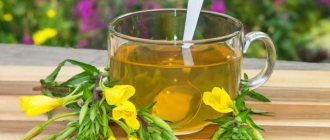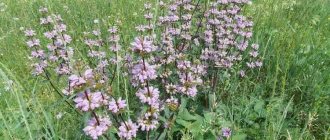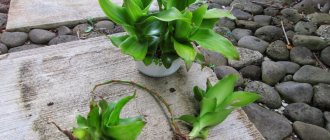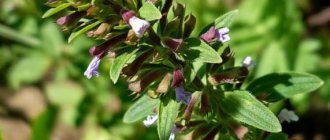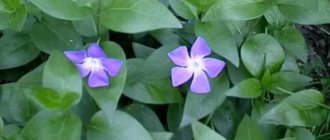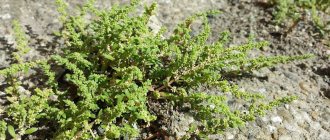Description
Sparrowweed belongs to the perennial herbaceous plants of the Borage family. Its height is approximately 70 - 80 cm, the stem is thick and strong, it is straight, but well branched.
The leaf blades are lanceolate, sit on the stems in an alternate order, and have a dark green tint. The flowers of the plant are small, collected in the axillary parts of the upper leaves, and have a yellowish-white color.
The fruits of the plant look like white nuts. Loosestrife flowering begins in July and ends in July.
Description and preparation
Sparrow officinalis has a thick, erect, branching stem, reaching up to 80 cm in height, and lanceolate leaves. In June-July, the sparrow blooms with small white-yellow flowers, which are located in the axils of the upper leaves. The fruits are white nuts. Sparrow grass is used as a medicinal raw material. The preparation is made during flowering: the upper parts of the shoots are cut off (no more than 30 cm) and dried in a well-ventilated area, turning over daily. Dried raw materials are stored in fabric or paper bags for no longer than 2 years. Sometimes in folk medicine, sparrow roots are used, which are harvested in the fall.
Article on the topic: Golden mustache - useful properties, description
Spreading
Loosestrife grows throughout central Russia, and is found on the mountain slopes of the Caucasus, in the regions of Siberia, the Urals and Ukraine. Its halo of growth in Europe is very extensive, covering all the countries of the central European part, the Baltic countries, and the southern coast of Europe.
The plant is also common in Asian countries such as China, Afghanistan, Iran, Iraq, and Lebanon. The sparrow can be found in forested areas of North America and Canada.
The medicinal plant is easy to find in deciduous forests; it lives on the edges and clearings, is found in meadows and fields, among wastelands and shrubs, and likes to grow in sunny places along roads and arable lands.
Useful properties and chemical composition
Today, pearl grass has found wide use in the pharmaceutical industry due to its properties and unique composition. The herb contains the following beneficial substances:
- Ineral salts;
- Mucous substances;
- Organic acids;
- Pigments;
- Phenols;
- Flavonoids;
- Carbohydrates;
- Phospholipids;
- Lithospermic acid;
- Ascorbic acid;
- tannins;
- Alkaloids.
The plant has the following pronounced properties: tonic, choleretic, anti-inflammatory, analgesic, laxative, diuretic, contraceptive, regenerating, hemostatic, restorative, immunostimulating, antiseptic.
Varieties of loosestrife
The main interest for humans is the medicinal species of sparrow, although some of the species are used in gardening and landscape design. Here are some of them.
Lithospermum carolina
This subshrub grows up to a meter high, it has dense foliage and stems with thorns. In June, this vigorous plant begins to produce many small, light orange flowers. The flowers are bell-shaped and look very pretty.
Lithospermum purple-blue
This plant has two types. Varieties belonging to the first type do not have buds and spread along the soil. Varieties of the second type have a variety of azure tones when flowering; they bloom from late spring to early autumn.
Lithospermum olivofolia
This ground cover plant is only 15 cm tall, it is decorative, purple, pink, blue, blue flowers bloom on it. The foliage has a muted silver tint. It is widely popular among gardening enthusiasts.
Lithospermum spreading
The plant is low-growing and flowering. The height is only 10 cm, the flowers of wild plants are bright blue with gloss. Based on this species, decorative varieties with the widest color palette were bred; there are even combined shades. The plant is not picky about soil, but does not have high winter hardiness.
Lithospermum (sparrow) red-root
This plant is listed in the Red Book, as its population is on the verge of extinction. The rare plant crop is found quite rarely and in small locations in some areas of the Amur Territory.
The reason for the disappearance of this species lies in human mismanagement and the death of plants due to forest fires. Natural factors also cause the death of some rare species.
Lipotpermum red root is valued for its medicinal qualities; it contains a red pigment in the root, which is used in paints. The rhizome contains many healing components.
Sparrow officinalis - beneficial properties
There are 4 species of sparrow, of which the most famous is the medicinal sparrow - L. officinale L. from the borage family - Boraginaceae, which grows in the forests of the middle zone and in the south of the European part of Russia, the Caucasus, and Western Europe.
All parts of the Sparrow plant are used for medicinal purposes: stems, leaves, flowers and fruits. The grass is harvested in June-July, the fruits in August. The root bark contains the red pigment litospermine, the fruits contain fatty oil. The plant contains substances that inhibit the production of thyroid hormones. The plant is pulled out by the roots during flowering and dried in bunches under an open, ventilated canopy. The roots are crushed and dried in dryers at a temperature not exceeding 40°C.
Sparrowberry has long been used in ancient European medicine and very widely in folk medicine in many countries. Red-rooted sparrow is popular in Chinese medicine. Its roots, leaves in the form of a decoction and fruits in powder are used internally as an antipyretic, diuretic and for the prevention of measles in children, and externally for burns, frostbite and wounds, as well as for eczema and urticaria.
Sparrow has diuretic, laxative and analgesic properties. Sparrow leaves are sometimes used as a tea substitute. Decoctions and infusions are used for headaches, colds, stomach pain, urolithiasis and as a laxative.
Externally, powder from dried or fresh leaves is used and applied to cuts and bruises. The fruits (seeds) of the sparrow are used in folk medicine for painful menstruation, to speed up the resolution of difficult labor and as a pain reliever. If you have thyroid diseases, consult your doctor about the possibility of using the plant for treatment.
An infusion is prepared from the leaves and flowers of the sparrow as follows: 20 g of crushed leaves or flowers, or a mixture thereof, pour 200 ml of boiling water, leave in a bath for 15 minutes, cool at room temperature for 45 minutes, filter, bring to the required volume. Take 1/3 cup 3 times a day.
To prepare the decoction, take 15 g of roots, grind them, pour in 180 ml of boiling water, leave in a boiling water bath for 30 minutes, cool for 10 minutes, filter, bring to 180 ml. Take 2 tbsp decoction. spoons 3-4 times a day after meals.
Decoction from the plant:
6-12 g of crushed sparrow roots per 400 ml of water, boil for 10 minutes, leave for 1 hour, filter. Take 100 ml 3-4 times a day for infectious diseases accompanied by the appearance of a rash (measles, chicken pox, scarlet fever). The decoction is used to wash purulent wounds, burns (they heal quickly) and insect bites.
Article on the topic: Arrowroot reed - useful properties, description
With Graves' disease, urolithiasis. Infusion: 2 tsp. Pour 1 cup of boiling water over the herbs and seeds, leave for 2 hours, strain. Take 2 tbsp. 3-4 times a day for colds, headaches and as a laxative.
In America, Indian women who do not want to have children collect a contraceptive herb known to them in the forest and prepare a very thick decoction from it, which works flawlessly as long as it is consumed. It does not have any harmful effects even with prolonged use. When you stop using it, a completely normal pregnancy occurs. Thus, Indian women know how to regulate pregnancy at will. Only in the 20th century. Europeans managed to find out that this grass is some kind of sparrow - Lithospermum.
Despite such widespread use, these plants have not been studied for a long time. Only after American scientists examined the weed sparrow, the roots of which were used as a contraceptive in Indian folk medicine, and discovered that it contains anti-estrogenic substances, did the scientific study of these species begin.
In the Far East, in Primorye and the Amur region, a similar species, also a perennial, the red-rooted sparrow, is common. Grows on dry rocky slopes among bushes. This species has a dark red thick root. The roots of the red-rooted sparrow were previously used instead of blush. The nuts are also white or brown, smooth and shiny, and have a spherical-oval shape. The flowers are white, located in the axils of the upper leaves. Blooms in June.
Of the annuals, the most common is the field sparrow, whose range occupies almost the entire eastern Europe and western Siberia. In the southern regions it blooms from the end of April, and in the northern regions - at the end of June. Field sparrow (sparrow seed, millet, blush, woodgrass), with white flowers and brown fruits. Sparrow roots collected in the spring before the leaves were used as blush. Field sparrow (Lithospermum arvense) is a biennial weed that grows on loamy and sandy soils and usually disappears with the introduction of busy fallow. It grows on rocky slopes, wastelands, fallow fields, in crops, in bushes and in trash areas. Its seeds are often found between the seeds of winter grains and spinning plants and are sown together with them. Field sparrow seedlings can be destroyed by timely harrowing of the soil.
Purple-blue sparrow (Buglossoides purpurocaerulea) is a wild plant native to Europe and Asia Minor, capable of covering even large stones with its large curls. Height 20-30 cm. Arched shoots lie on the ground and take root in their upper part. As they grow, they form a very dense carpet. The leaves are lanceolate, small, gray-green. Shoots and leaves are pubescent. The purple-blue sparrow blooms in June with bright blue inflorescences. Small flowers are collected in one branch. Loves loneliness. Therefore, it should be planted separately from all other plants. Location: sunny or partial shade. Tolerates heat well. It blooms poorly in the shade and smells weak. It does not require special care, only timely watering and autumn pruning. The sparrow tree propagates by division in the spring and by cuttings in the summer after flowering.
The use of sparrow for medicinal purposes: recipes for effective medicines
There are many medicinal recipes using pearl herb, but they should be used as an additional remedy to the main therapy prescribed by the attending physician. If you follow the dosage and rules for preparing medications, recovery can occur much faster.
In medicine
Based on all parts of the sparrow, medicines are produced that successfully increase the body's protective properties, eliminate pain, minimize inflammation, rejuvenate the skin, dissolve stones in the bladder and kidneys; normalize the functioning of the thyroid gland and gastrointestinal tract.
In cosmetology
Sparrowberry is an excellent remedy for combating hair loss; healing shampoos, extracts, balms and elixirs are produced on its basis.
Women use pearl grass to rejuvenate their facial skin using infusions and compresses. They make medicinal baths by adding a tincture from the plant to the water. Such procedures not only have a beneficial effect on the skin of the body, but also soothe.
In folk medicine
At home, you can quickly and easily prepare recipes from the officinalis sparrow. Pain during menstruation can be relieved with an infusion prepared from dry sparrow herb and water. You should brew a pinch of herb with half a glass of boiling water, leave for 20 minutes and dilute the infusion with 0.5 liters. Drink the medicine three times after meals, 100 ml.
Colds, constipation, and headaches will be overcome by an excellent folk remedy prepared from the dry seeds of the plant. Grind the seeds and herbs in an amount of 30 g and brew the mixture with a glass of boiling water.
Leave for two hours, then filter and drink 50 g throughout the day. Festering wounds and complex burns can be washed with infusion of sparrowweed. A spoonful of herbs and two glasses of boiling water are enough. Cool the infusion and treat the surface of the wound. You can save yourself from insect bites with the same remedy.
Sparrow tincture helps with colds, inflammation and pain. Take 100 g of dry plant and pour 100 g of alcohol or vodka. Leave for a month in a dark place, when the tincture is ready, take it with water in the proportion of 20 drops per 200 ml of water. Course duration is 3 weeks.
For joint pain, make a medicinal infusion and moisten gauze in it, apply a compress to the sore joints.
Composition and properties
The grass of the medicinal sparrow is rich in: flavonoids, mucous substances, mineral salts, organic and phenolic acids, as well as pigments. The fruits contain: fatty oil, lithospermic acid and phospholipids. The roots of the plant contain: flavonoids, phenolic acids, mineral compounds, sugars, carbohydrates, red pigment.
Sparrow has anti-inflammatory, analgesic, tonic, laxative, bile-, and diuretic effects. Also, people attribute contraceptive properties to the sparrow. In folk medicine, sparrow officinalis is used for:
- colds, ARVI, flu;
- headache;
- stomach pain;
- constipation;
- malignant tumors of the throat, esophagus, stomach, liver and lungs;
- urolithiasis;
- dysmenorrhea;
- hypothyroidism;
- bruises;
- pain in joints, muscles;
- measles, chickenpox;
- stomatitis;
- candidiasis;
- purulent wounds, burns, frostbite, insect bites, eczema, urticaria.
In addition, the sparrow has regenerative properties and is used in cosmetology for aging skin and hair loss.
- 50 g of dried sparrow herb;
- 500 ml boiling water.
Pour boiling water over the herb, let it brew for 10 minutes and strain. Divide the infusion into three servings and take in three doses: morning, afternoon and evening. This infusion is recommended for dysmenorrhea and mild hypothyroidism. Infusion for colds, headaches and constipation:
- 2 tsp dried herb with seeds of the sparrow;
- 1 tbsp. boiling water
Pour boiling water over the herb and let it brew for two hours. Strain the infusion. Take 2 tablespoons 4 times a day.
- 1 tbsp. crushed herb sparrow;
- 500 ml hot water.
Fill the sparrow with water and boil over low heat, covered, for 15 minutes. Then remove the broth from the heat and let it brew for half an hour. Strain. Take 1-2 tablespoons 4-5 times a day. Decoction for skin infections (measles, chickenpox):
- 10 g of crushed sparrow root;
- 400 ml hot water.
Pour water over the root and boil for 10 minutes. Then let the broth brew for an hour and strain. Drink 100 ml 3-4 times a day. This decoction can also be used to wash insect bites and festering wounds. Tincture:
- 100 g of dried crushed herb Sparrow officinalis;
- 1 liter of vodka or 40% alcohol.
Alcohol tincture of sparrow has anti-inflammatory, anti-cold and analgesic properties. Pour vodka over the grass and place it in a dark place at room temperature for 20 days.
Strain the resulting tincture. Take 20 drops with 1/3 glass of water three times a day. Recommended course of treatment: 14-21 days.
Decoction for external use:
- 3-4 tbsp. l. crushed herb sparrow;
- 500 ml hot water.
Related article: Ivan tea - beneficial properties, description
Pour water over the herb and boil under the lid over low heat for 25 minutes. Then let the broth brew for 50 minutes. Strain the finished product. Use for washing wounds, ulcers, and rinsing the mouth. For pain in muscles, joints, and spine, compresses are prepared from sparrow grass: the grass is crushed, wrapped in several layers of gauze, doused with boiling water and applied to the sore spot, covered with polyethylene and a warm cloth. For burns and insect bites, lotions are made from sparrow grass to the affected areas. Powder made from fresh or dried sparrow leaves is used to treat cuts and bruises. For colds, infusions are prepared from collections of Sparrow and raspberries, meadowsweet or linden.
Growing and care
Many gardeners grow medicinal plants on their plots, including sparrowweed. Here are some recommendations for caring for the plant.
Selecting a location
Sunny millet will feel great in an open place. Since the plant is short in stature, it is not too bothered by cold winds and drafts. If the area is low-lying, make good drainage or grooves that drain water.
Priming
All varieties of this crop love slightly alkaline soil, with the exception of spreading species. It is better to dilute heavy soil with sand or peat. Loose and breathable soil will be ideal for the sparrow.
Watering
This crop belongs to the category of drought-resistant plants, so it does not require frequent watering, but for bright and long flowering it is still worth taking care of wetting the soil. It should not dry out beyond 5 cm, otherwise the plant may begin to shed leaves and flowers.
Feeding
The ideal fertilizer for the sparrow will be the Kemira universal complex, mullein infusion, and urea.
Wintering
Experienced gardeners recommend covering the plant with mulch made from leaves or organic waste. This way it is guaranteed to survive the winter.
Pruning
Throughout the season, sanitary pruning should be done to remove faded flowers. In the fall, they do radical pruning of the bush right to the root.
Planting sparrow seedlings
The spring period is suitable for planting seedlings. Holes for plants are made nearby, no more than 0.5 cm deep. A drainage layer is laid on the bottom and fertilizers are added.
Reproduction
Sparrow propagates in three ways: by dividing the bush, cuttings and seeds. All methods are equally effective.
Cuttings
Shoots should be taken from the current year's stems. The best time for cuttings is July. Planting material is cut from the apical shoots and stuck into moist soil. Cuttings should always be kept in moist soil, then they quickly grow their own roots and become independent plants.
Dividing the bush
If your plantings have grown well, you can divide the bush. It is necessary to divide the curtain and leave at least one recovery bud on each part. Immediately after planting in a new place, the plant begins to grow actively.
Seed method
Seeds are grown in seedlings. To do this, you need to take a container with loose soil, moisten it and sow the seeds. Incorporation of seeds into the soil is carried out no more than 0.3 mm. Sowing is done in February or March, and in May the seedlings will be ready for planting.
Sparrow medicinal: recipes of traditional medicine
Even if the sparrow is not used in official medicine, it has found application in the recipes of folk healers.
• For colds, prepare a healing infusion from the plant. Take 2 teaspoons of dry seeds and (or) leaves. Pour a glass of boiling water over them, cover with a lid and leave to steep for 2 hours. The infusion should be consumed at the rate of: 2 tablespoons 4 times a day, half an hour before meals. If you have a headache, drink one tablespoon every hour (but no more than seven spoons per day).
• In the presence of festering wounds, open boils, insect bites and burns, prepare a special decoction. The root of the plant is finely chopped, take 10 g of crushed raw materials, pour into a saucepan, pour 400 ml of boiling water, put on medium heat and cook for about 10 minutes, stirring occasionally. Then the broth is covered with a lid and left to infuse for an hour. The finished broth is filtered. In case of skin lesions, the problem area is washed with this decoction, and lotions are applied for burns. For bark and chickenpox, the decoction is taken at the rate of 100 ml 4 times a day, regardless of food intake. The decoction also helps with infectious skin diseases. To do this, drink it with the same dosage for five days in a row.
The information on the site is provided solely for informational and informational purposes, does not claim to be reference or medical accuracy, and is not a guide to action. Do not self-medicate. Be sure to consult a specialist.



